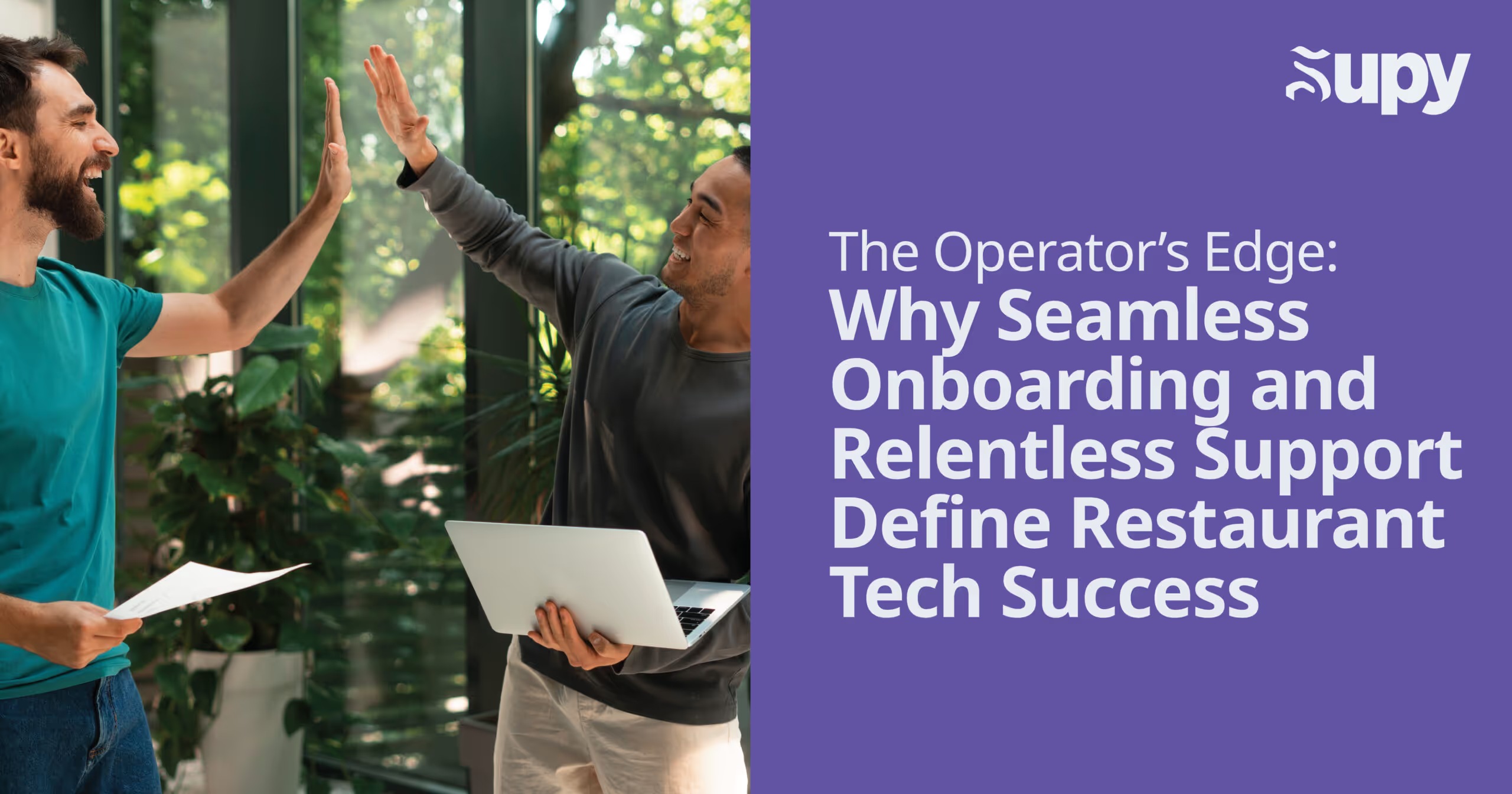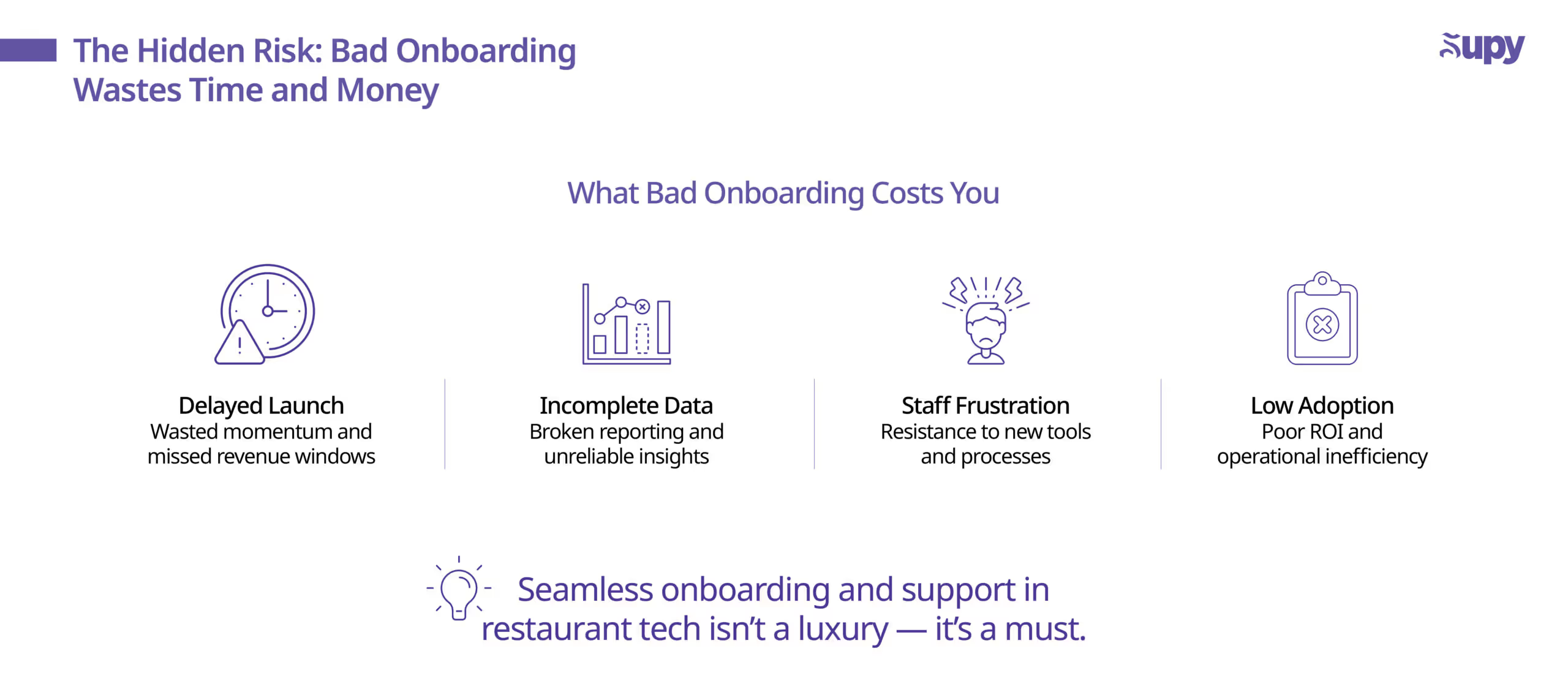The Operator’s Edge: Why Seamless Onboarding and Relentless Support Define Restaurant Tech Success

Choosing the right tech platform for your restaurant is only half the battle.
The real test comes after you sign the contract.
Without seamless onboarding and support in restaurant tech, even the best tools can fail to deliver results.
In this blog, we’ll break down why onboarding and support are critical, what great onboarding looks like, and how Supy turns setup into a strategic advantage.
The Hidden Risk: Bad Onboarding Wastes Time and Money

Many operators underestimate the damage caused by poor onboarding:
- Delayed launches that waste momentum
- Staff frustration and resistance to change
- Incomplete data setups that cripple reporting
- Low adoption rates that kill ROI
Seamless onboarding and support in restaurant tech isn’t a luxury.
It’s essential to unlock the full value of your system quickly and painlessly.
What Seamless Onboarding Actually Looks Like
Good onboarding isn’t just about training videos or user manuals.
It’s about embedding the technology into real operational workflows.
At Supy, we approach seamless onboarding and support in restaurant tech with five principles:
- Dedicated onboarding managers, not generic support teams
- Deep industry expertise (former F&B operators, not just tech people)
- Hands-on help populating ingredients, suppliers, recipes, and pricing
- Customized workflow setups based on how your kitchens actually run
- Post-go-live performance checks to catch early errors
When onboarding is done right, your team feels confident, your system works from day one, and results come faster.

Why Support Matters Just as Much as Setup
After onboarding, the right support makes sure your system stays valuable, not just functional.
Great seamless onboarding and support in restaurant tech includes:
- Live, round-the-clock assistance (not just ticket systems)
- Proactive reporting checks to catch mistakes early
- Continuous training for new features or staff turnover
- Fast responses to operational questions and emergencies
Support isn’t just troubleshooting.
It’s an ongoing partnership to keep operations tight and margins strong.
Real-World Impact: Faster ROI and Stronger Adoption
In the Tech on Toast podcast, Supy's Founder Dani El Zein explained why onboarding is at the heart of Supy's success in new markets.
- Supy has won multiple G2 awards for Best Support and Best Implementation
- Customers often launch in as little as 2–8 weeks, not months
- Staff adoption rates are higher because workflows feel intuitive from day one
By focusing on seamless onboarding and support in restaurant tech, Supy helps operators achieve faster ROI, and avoids the pain of failed rollouts.
The Cost of Cutting Corners on Onboarding

Some platforms rush onboarding to close deals faster.
But rushed onboarding leads to:
- Bad data that breaks your reporting
- Confused teams that resist using the system
- Extra costs fixing mistakes down the line
- Dashboards with data that you don’t believe
Investing in seamless onboarding and support in restaurant tech saves time, reduces churn, and builds trust, both with your team and your customers.
Supy’s Approach: From Day One to Day 100
At Supy, onboarding and support are not afterthoughts.
They are core to the product experience.
Our team:
- Works directly with your ops leaders to input clean data
- Customizes templates for your stock counts, purchasing flows, and reporting
- Checks your food cost, stock movements, and waste reports weekly for the first 3 months
- Flags operational variances you might miss (like portioning errors or supplier price changes)
The result?
Seamless onboarding and support in restaurant tech that delivers real operational change, not just new software.
Final Thought: Tech Is Only as Good as Its Implementation
You can buy the best tech stack in the world.
But without seamless onboarding and support in restaurant tech, you’re leaving results to chance.
If you're investing in technology to control food cost, boost efficiency, and grow your restaurant group, demand more than just software.
Demand a partner who’s committed to making sure it actually works, from day one.
That’s Supy.







